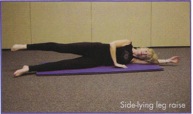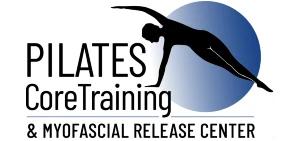How many athletes know that the upper gluteus muscle, the gluteus medius, is the culprit in many overuse injuries? To understand this, lets look at where this muscle is and what its action is. It is situated at the upper edge of the hip above the gluteus maximus. Its action is abduction of the thigh (lifts leg out to the side), rotates the thigh inwards and outwards and most importantly, keeps the pelvis stable especially during the walking and running movement as one leg has more weight bearing through the gait stance.

In Mates, we focus on the pelvis first. This is the center of gravity of the body and where the ground reaction forces meet with the downward force of gravity. This force is then dispersed rhroughout the body. If the muscles attached to the pelvis are out of balance then loads are not transferred through the body correctly. Your body can withstand an imbalance for quite some time until one day seemingly out of the blue you experience discomfort or downright pain. So in Mates when we train the core, we train it by watching very small movements making sure that you are training your muscles in a balanced alignment. This is why Pilates delivers useful benefits in both physical training and injury management.
Back to the gluteus medius. Runners (tennis players) who have a weak one are likely to make unconscious adaptations to their technique. The body is very tricky this way. The pelvis can hike up on one side, the knee will shift or rotate inwards or outwards and/or the pelvis will rotate. Usually 2 or 3 adaptations occur at one time. What makes this the trifecta for pain is that weakness will have implications all the way down the kinetic chain. You will be at an incteased risk of prolonged pronation of the foot and therefore shin splints or Achilles tendonitis and plantar facitis. Sometimes low back pain occurs because of the unbalanced load this places on the SI and low back joints.
By adding a few simple exercises to your training program you can strengthen your gluteus medius and prevent these nagging injuries from disrupting your game.
Side-lying leg raise
Lie on your side with lower leg bent at the knee. Top leg is straight and lined up with the hip. Reach long through your top leg until your waist lifts up off the floor. We call this your mouse house and is very crucial in isolating your gluteus medius. Lift up and down several times then hold. Keep your pelvis still. Try to hold for 30 seconds.
Side-lying leg raise hip lift
Repeat the above exercise yet add keeping hip off the floor. This gives an added benefit of working your shoulder stabilizers. Keep pulling your shoulder blade down and keep both shoulders wide. Also, remember to keep those abdominals in!
Clam
Lie on your side with your hips and knees bent about 30 degrees. Lift the top knee keeping your feet together. Make sure that you don’t roll back off your hip bone — keep your pelvis perfectly still and your ahfS engaged!
